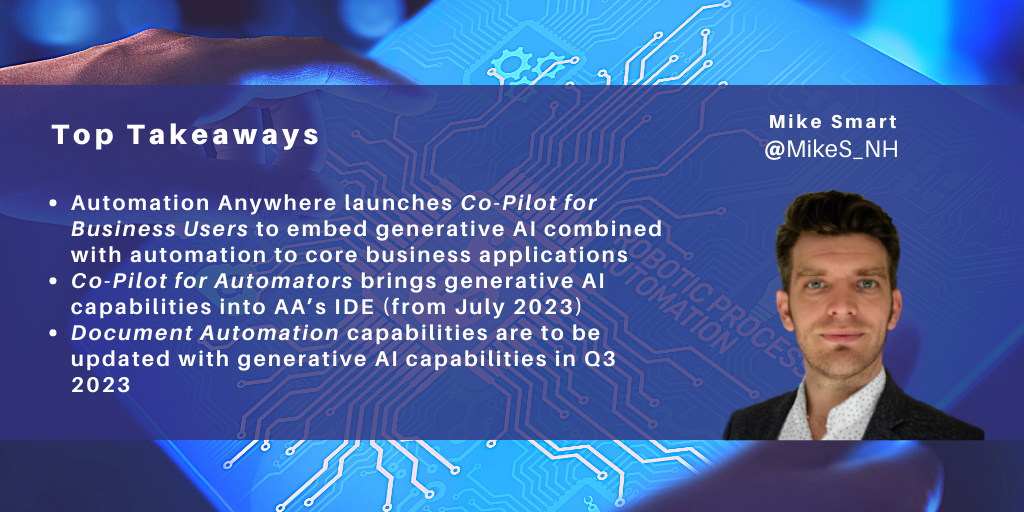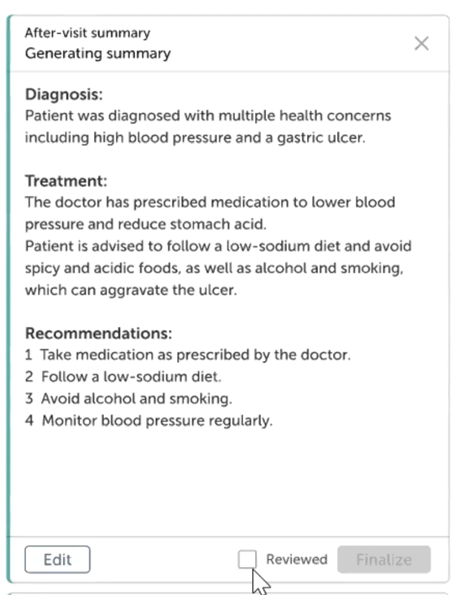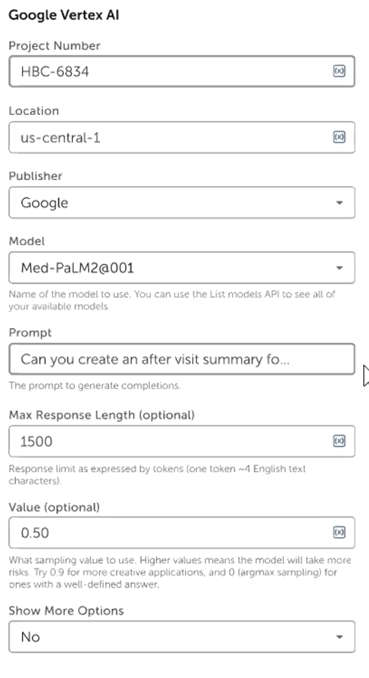Search posts by keywords:
Filter posts by author:
Related NEAT Reports
Other blog posts
posted on Jun 20, 2023 by Mike Smart

Automation Anywhere recently announced new capabilities for its platform powered by generative AI: Automation Co-Pilot for Business Users and for Automators, plus Document Automation. Here I take a look at these new capabilities and how they compare with those of other providers, and consider the wider implications of generative AI solutions for automation developers.
Automation Co-Pilot for Business Users
This is an update to Automation Co-Pilot AARI launched in October 2022, leveraging generative AI capabilities in automation assistants that can be embedded into business applications.
In the use case shown by Automation Anywhere, a doctor uses Co-Pilot to retrieve patient records and lab results, extracting data from pdf lab results which the doctor can validate, and then uses GPT to generate a summary of the information and editable next-action recommendations:

For this solution, Co-Pilot was configured with Process Composer to add the generative AI solution, select the AI model and enter the prompt for the AI. These solutions can leverage generative AI from Microsoft Azure OpenAI, Google Vertex AI (below), Amazon Bedrock, and Nvidia NeMo.

Automation Co-Pilot for Business Users is now available under a ‘bring your own license’ (BYOL) model, with Amazon Bedrock support added in Q2.
Automation Co-Pilot for Automators
Automation CoPilot for Automators aims to support automation designers in building bots by embedding Co-Pilot into the IDE. Using natural language text, users can ask the co-pilot to enter bot requirements which the co-pilot then uses to generate the skeleton of an automation flow in the designer. Users can then continue the chat with Co-Pilot to update this flow.
Following the automation skeleton's generation, Co-Pilot prompts the user to confirm whether the generated automation matched requirements as part of reinforcement learning.
Automation Co-Pilot for Automators will be available for preview in July 2023, with pricing and packaging to be announced.
Document Automation
The third new capability announced is generative AI large language models to analyze, extract, and summarize information as part of Automation Anywhere’s document automation capabilities.
The company states that large language models with minimal customization can read through large documents to find specific clauses or for a general understanding of unstructured documents.
Generative AI for Document Automation is expected to launch in Q3 2023. The company is evaluating different generative AI solutions and models, as these will be offered as an embedded solution rather than BYOL.
How does this compare with other providers?
Generative AI is undoubtedly a hot topic inside and outside the automation space, and the two big themes have been connecting to these large language models within automations and using these models for ‘automating automation’.
In the last month, we’ve seen UiPath going down similar paths with the public preview of its connectors to OpenAI and Azure OpenAI and its Clipboard AI offering which uses generative AI solutions to quickly copy information between applications.
There has also been a lot of news related to code generation, including automation code, using these large language models. These have tended to be focused on generating Python code which can then be imported into automation IDEs rather than embedded into low-code designers, as shown above with Automation Co-Pilot for Automators.
Automation Anywhere has built data protection, security, and compliance requirements into its generative AI offerings. Much has been said about security concerns with developers using generative AI models, with some organizations such as Apple banning employees from using ChatGPT over fears that IP in these conversations is being used to train the large language models.
With these integrations to third-parties, Automation Anywhere has stated that client data is secure and will not be used to train any shared models.
What will generative AI solutions mean for automation developers?
The generative AI solutions that the Automation Anywhere platform is leveraging can be very impressive and the natural question following the Automation Co-Pilot for Automators example is whether the automation space still requires developers.
To that question, NelsonHall answers yes.
Generative AI, similar to low/no code IDEs, is opening up the ability to develop automations for more business users, requiring much less intensive coding or development experience than the old IDEs from several years ago. These advances have mainly been feathers in automation developers’ caps as well as allowing citizen developers to build an automation skeleton quickly. While expanding developer resources to encompass business users who know the process can certainly help in the development of automations, early attempts at this have run into pitfalls due to poor processes being automated inefficiently, and with little investment to ensure that these automations are shared across the organization relative to a centralized automation CoE.
For larger, more complex automations that offer enterprise-wide impact, skilled automation developers are still required to translate the business requirements into automations to leverage the best-in-class methodologies, AI models, and supporting platforms that can be updated to match changing business requirements. In these situations, process understanding (task and process mining) platforms can be used to more fully understand the process and automatically create automation skeletons requiring last-mile work similar to that when using generative AI.
